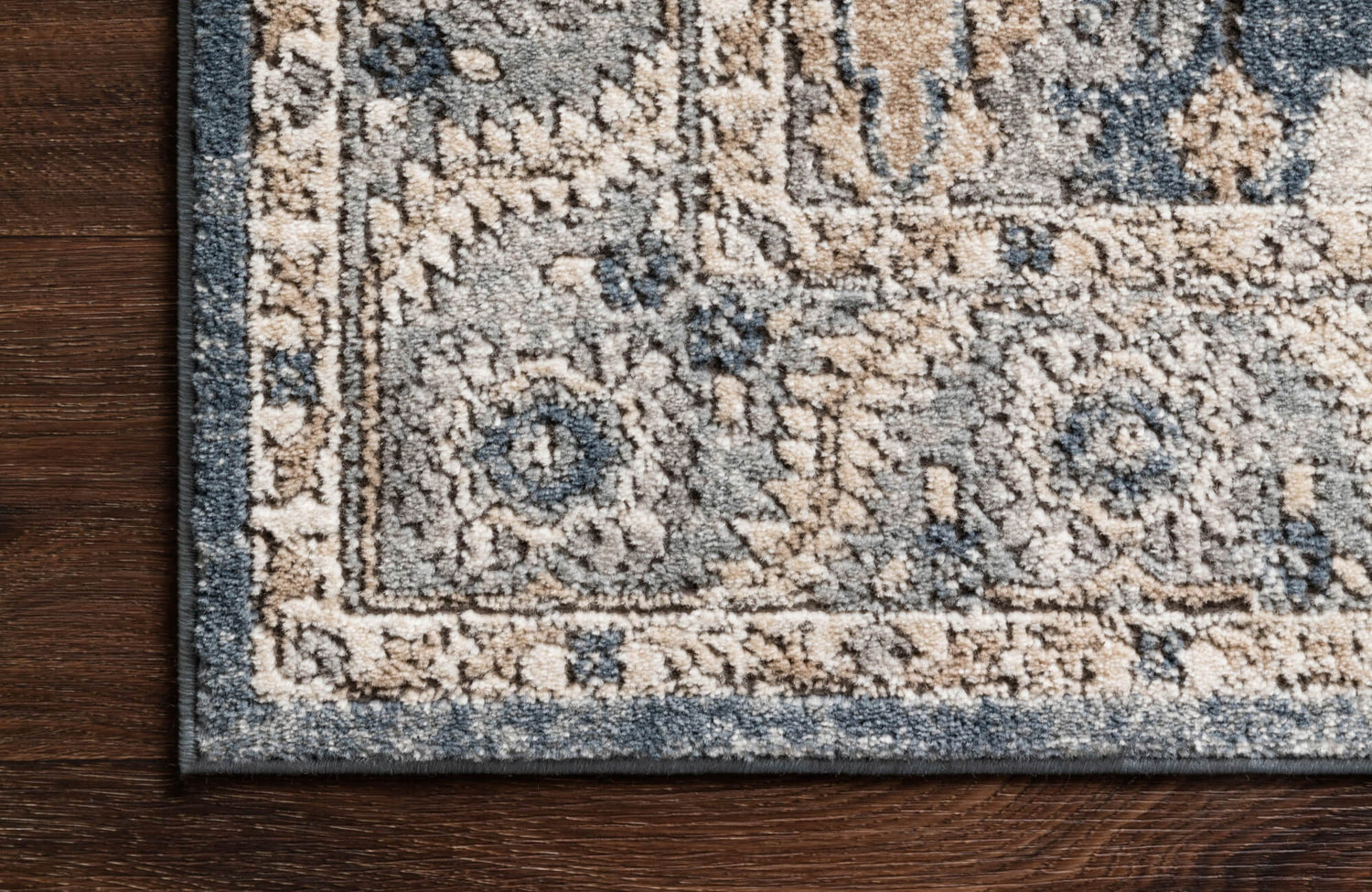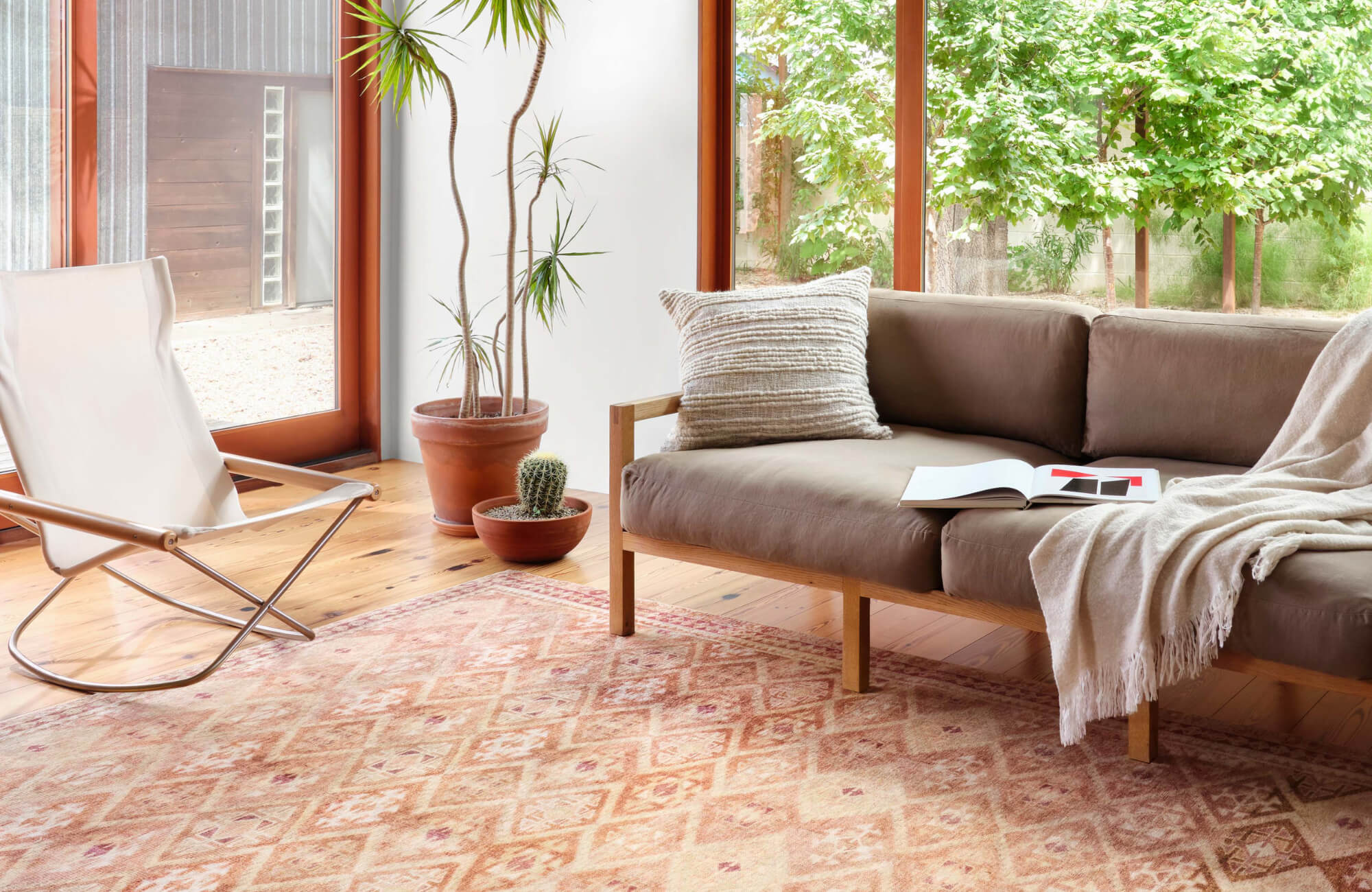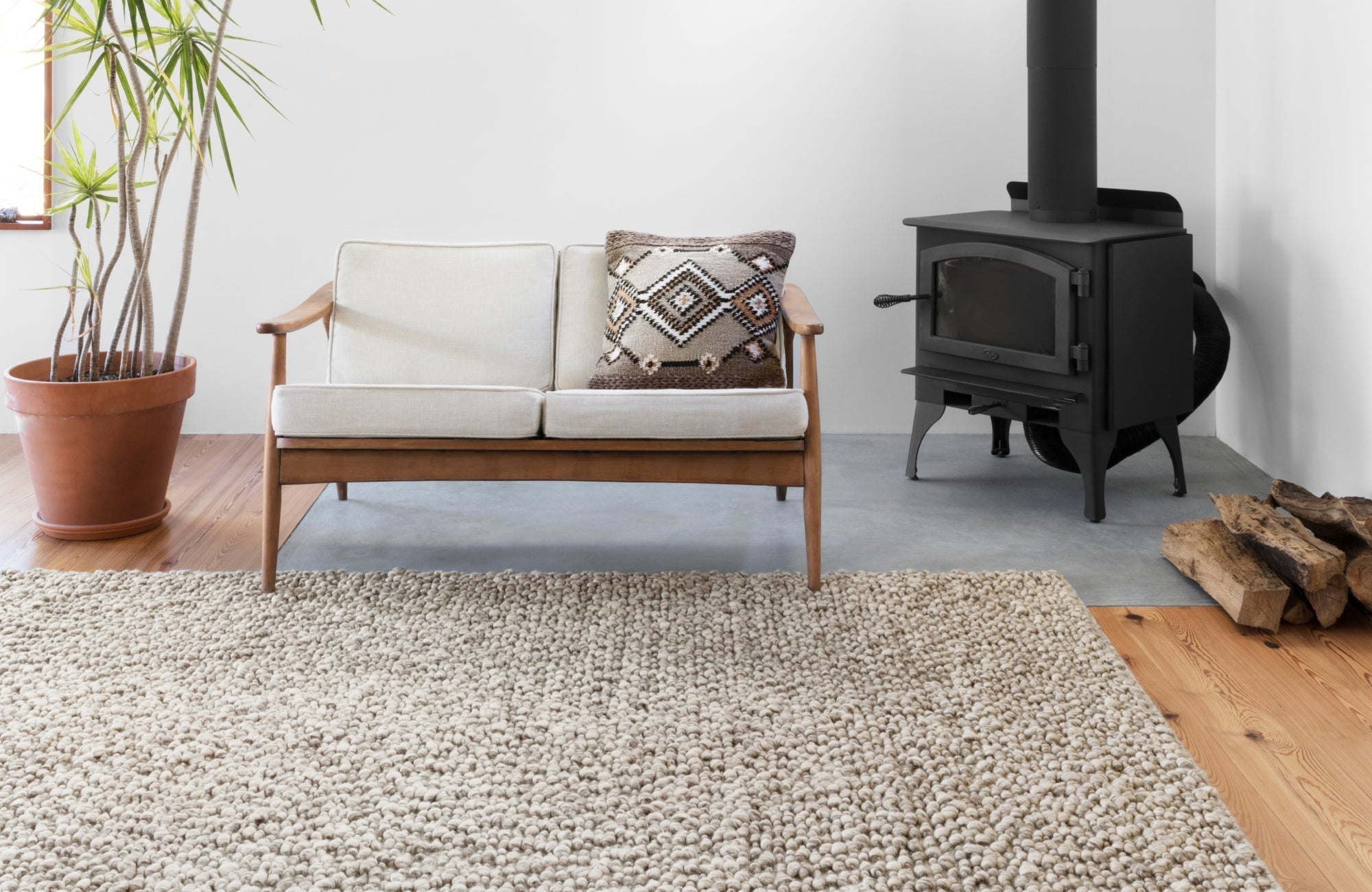A well-chosen rug does more than warm up a room, it brings the entire space together. From anchoring furniture layouts to echoing your color palette, rugs are one of the most effective tools for reinforcing your home’s overall aesthetic. Whether you’re styling a calm minimalist bedroom or a layered, eclectic living room, the right rug can subtly enhance your design or become a standout piece on its own.
In this guide, we’ll walk you through how to choose a rug that matches your decor style with confidence. From defining your interior look to coordinating texture, color, and placement, these tips are designed to simplify the process and help every detail feel intentional. By the end, you’ll have a clear sense of what to look for and how to bring it all together beautifully.
Identify Your Interior Style
Before picking the perfect rug, it helps to first understand your overall interior style. Are you drawn to the clean lines and simplicity of modern or minimalist spaces? Or do you gravitate toward the layered textures of bohemian design, the timeless charm of traditional decor, or the breezy, relaxed feel of coastal-inspired rooms? Defining your style early on gives you a clearer direction and makes the rug selection process feel far less overwhelming.
Once you’ve identified the core elements that speak to your aesthetic, whether it’s symmetry and rich tones or casual accents and natural light, you can start filtering out rug options that don’t align. For instance, a minimalist room may call for a low-contrast rug with a subtle texture, while a more eclectic space could support something bolder. Knowing your style also helps keep your choices cohesive with the rest of your home, so every piece feels intentional rather than random. It’s a simple first step, but one that makes all the difference in finding a rug that truly fits.

Matching Rug Patterns and Textures to Decor
Rug patterns can say a lot about your style, so it’s worth thinking about how they interact with the overall design of your room. Bold, busy patterns often thrive in bohemian, eclectic, or maximalist spaces where layering and visual interest are key. On the other hand, minimal or geometric designs tend to pair well with modern and contemporary interiors, where clean lines and understated accents are more intentional.
Texture plays just as important a role as pattern, sometimes even more. A flatweave rug, such as our Haverford Polyester Pile Rug in Desert / Rust above, offers a streamlined, casual look that works well in airy or busy areas. In contrast, a plush or shaggy rug can bring warmth and softness to a space, making it ideal for cozy bedrooms or relaxed living rooms. The texture you choose can help balance a room’s feel, especially if the existing furniture is lean or structured.
Also, consider how both pattern and texture interact with one another. For example, a bold pattern with a thick pile might feel overwhelming in a tight space, while that same pattern in a lighter, low-pile weave could feel just right. By thinking of pattern and texture as a balancing act, you can use rugs not just as accessories but as tools to fine-tune the room’s energy and flow.
Coordinating Colors and Tones
Color is one of the first things people notice about a rug, and how it interacts with your room can dramatically influence the space. If your room already has a strong palette, let’s say, a bold sofa or a painted accent wall, consider choosing a rug that complements those tones without competing. This could mean pulling in a secondary color from your artwork or accessories or choosing a rug in a similar hue but a slightly lighter or darker shade to maintain cohesion.
Neutral rugs are a go-to option for grounding a space, especially when your furniture or decor already introduces a lot of color or texture. Soft grays, creams, and taupes offer a calming effect and allow other design elements to stand out without overwhelming the space. They’re also incredibly versatile, so they’ll continue to work even if you update the room’s decor later on.
If your space feels a bit flat, a rug with richer or contrasting colors can add energy and depth. For example, a deep blue rug in a mostly white room can create a striking anchor without being too loud. Just be sure the tone of the rug still speaks to the mood of the room; warm tones can feel cozy, while cool tones tend to bring in a more relaxed, breezy feel.
Sizing for Visual Balance
Even if you’ve nailed your color scheme and found the perfect pattern, the wrong rug size can easily disrupt the balance of a room. A rug that’s too small can make furniture feel like it’s floating, while one that’s too large might crowd the space and hide architectural details like beautiful flooring or baseboards. Rug size plays a quiet but essential role in anchoring your decor and making the entire room feel intentional.
To achieve visual balance, consider how your rug interacts with furniture placement and the open space around it. In living rooms, for example, rugs should typically be large enough to help define the seating area. In more open layouts, rugs can act as subtle dividers between zones, so getting the size right ensures each area feels distinct without breaking the overall flow.
Also, be mindful of the negative space around your rug. Leaving a consistent border of exposed flooring, typically 12 to 18 inches, creates a clean, framed look that helps the room feel balanced and spacious. Too little space can make the area feel tight, while too much might cause the rug to feel disconnected. When done right, proportion not only fills the visual gap but also reinforces the overall harmony of your space.

Room-by-Room Style Tips
Every room has its own purpose and design rhythm, which means rug choices should shift accordingly. While your decor style sets the tone, the function of each space will help guide you toward the right texture, size, and placement. Below, we’ll walk through how to choose rugs that not only fit your design vision but also support how the room is used day to day.
Living Room
In the living room, rugs do more than add color or texture, they help define the layout. A large area rug that fits beneath all or most of the seating can visually pull the space together, creating a sense of cohesion. This is especially helpful in open-plan homes where a rug can subtly separate the living area from adjacent zones like dining or kitchen spaces.
If your seating area is smaller or your space is limited, a rug placed under just the front legs of the furniture can still achieve a connected, intentional look. You’ll want to keep proportions in mind, making sure the rug isn't too small to support the visual weight of your furniture. Look for low- to medium-pile options in living rooms to strike a balance between comfort and practicality.
Bedroom
Bedrooms benefit from rugs that bring softness and comfort, both underfoot and visually. Placing a rug beneath the lower two-thirds of the bed can create a cozy, grounded effect while giving you something plush to step onto in the morning. In smaller rooms or for twin beds, runners on either side are another stylish solution that maintains balance without covering the entire floor.
You’ll also want to match the rug’s pile height and texture to the feel you’re going for. For example, a low-pile rug can look crisp and tailored in a modern bedroom, while a shag or tufted option adds warmth to more relaxed or romantic setups. As seen above with our Hutchinson Polyester Face Rug in Sage / Graphite, a well-chosen rug can complement your bedding and furniture without overwhelming the space.
Dining Room
Rugs in dining rooms need to be both stylish and functional. Ideally, they should extend far enough beyond the table so that chairs remain on the rug even when pulled out; this prevents wobbling and helps protect your floors. Choose materials that are easy to clean, like flatweaves or low-pile options, since dining areas are prone to spills and crumbs.
In terms of style, the rug can either echo the dining set’s tone or bring in a contrasting texture to break things up. For instance, a sleek table may pair well with a handwoven jute rug for an added layer of warmth, while a rustic setup might benefit from something cleaner and more refined. Just be sure the rug adds to the room’s atmosphere while standing up to daily use.

Versatility and Longevity
When selecting a rug, it’s smart to think beyond your current setup and consider how your space might evolve over time. Styles change, furniture gets rearranged, and tastes often shift, so choosing a rug that can adapt with you is key. Versatile rugs act like a design anchor, offering flexibility without clashing with future updates. This is especially helpful in multipurpose spaces or homes that go through frequent decor refreshes.
Timeless patterns, such as subtle geometrics or classic borders, tend to stay relevant longer than trend-driven prints. As seen above with our Rollins Polyester Pile Rug in Cream / Smoke, these designs offer a versatile foundation that complements a wide range of interiors. Neutral color palettes are also easier to integrate across different design styles, whether you're leaning toward modern minimalism or something more eclectic. These types of rugs blend seamlessly with evolving palettes and seasonal decor, helping maintain visual cohesion even as the room changes. Choosing a rug that’s stylish without being overly specific can keep your space feeling fresh and cohesive for years.
Reversible rugs are another option worth considering for their added longevity and flexibility. With two usable sides, you can flip the rug over if one side shows wear or if you simply want a change in look. It’s a practical feature that still leaves room for personality and charm. Overall, rugs that offer both style and adaptability make it easier to evolve your space without needing to start from scratch.

When to Use Rugs as a Focal Point
In the right setting, a rug can be much more than a background piece, it can become the star of the room. As seen above with our Georgette Polyester Pile Rug in Clay / Navy, statement rugs are particularly powerful in minimalist or neutral spaces, where their bold patterns or colors can draw attention and define the mood. Instead of relying on artwork or accent walls, a vibrant rug can lead the room’s color story and bring energy to an otherwise quiet design. It acts as both a foundation and a feature, grounding the space while guiding the eye.
A bold rug works especially well when paired with understated furniture and decor. For example, in a living room with muted sofas and soft wall tones, a richly patterned rug can break the monotony and create a sense of depth. Similarly, in bedrooms with light bedding and simple accents, a rug with character adds a personal touch without overwhelming the space. The key is letting the rug stand out while everything else supports its presence.
Intentional placement is also important when using a rug as a focal point. Centering it within the room or beneath a main furniture grouping can help define its role and give it the attention it deserves. Even in smaller spaces, a statement rug can inject personality and charm without taking up any extra square footage. When used thoughtfully, a bold rug doesn’t just complete the design; it becomes the reason why the room feels complete.
Choosing a Rug That Feels Right at Home
Selecting a rug that matches your decor style doesn’t have to be a guessing game. By identifying your interior aesthetic, considering texture and pattern, balancing color and proportion, and tailoring your choices to each room’s function, you can find a rug that feels right at home. The key is to approach the process with intention, letting each element work together to create a space that feels cohesive, comfortable, and personal to you.
If you’re still deciding between styles or need help narrowing your options, our team at Edward Martin is here to support you. Contact us today to schedule a personalized design consultation, our experts are happy to guide you through the selection process and help you find the perfect rug that suits your lifestyle, design goals, and space.










